Archives: Resources
Harvest Kitchen: Personal Growth and Garlic
Georgian Fire garlic. Nason photo. By Roberta Bailey The late psychologist James Hillman once said that our duty is not to rise above life but grow down to it. He believed that each of us has a purpose or calling in life that reveals itself at an early age and reappears until we heed it.
Garlic Bloat Nematode
Garlic affected by bloat nematodes may be missing roots, and the basal plate may appear to have a dry rot. Sideman photo. By Eric Sideman, Ph.D. The stem and bulb nematode, or bloat nematode as it is often called, is not a new pest. It was reported in New York and California in the ‘30s.
When to Plant Garlic in Maine
Garlic growing at MOFGA’s Common Ground Education Center in Unity. English photo. People usually say mid-October is about the right time for when to plant garlic in Maine. That rule of thumb will, in most years, produce a decent crop. But why are more or fewer cloves per bulb sometimes produced, or more double cloves?
Peppers
By Joyce White In the limited space claimed from the surrounding woods of Stoneham, Maine, to accommodate their home, Liz Como and Andy Chakoumakos grow vegetables, herbs and flowers in pots and raised beds. The fourth owners of this owner-built home share it with 5-year-old Sofia, who joined their family as an infant. The home
Organic Sheep and Goat
A well-made lane guides sheep to pasture at Susan Littlefield’s Yknot Farm in Belmont, Maine, which is transitioning to organic. Photo by Diane Schivera. By Diane Schivera, M.A.T. Raising sheep and goats organically can be a challenge, so many farmers who support organic principles have not transitioned their animals to certified organic. Presently MOFGA Certification
Composting Tips
By Adam Tomash 1. Materials. Brown materials are high in carbon, green materials are high in nitrogen. Mix the two in rough proportions of 2 volumes of brown to 1 volume of green to achieve a C:N ratio of 25:1 to 40:1. Remember that different sources of nitrogen have differing amounts of nitrogen; e.g., alfalfa
In The Orchard
In March and April, new wood was top-worked by bark grafting onto plum tree limbs at the MOFGA orchard. My mid-July all grafts were growing well. C.J. Walke photo. By C.J. Walke Spring Freeze In my last article, I wrote about shifting weather patterns and their effects on our fruit trees. I wrote that the
What is Low Impact Forestry
Forester Sam Brown explains the principles of low-impact forestry at one of MOFGA’s Farm Training Project workshops. English photo. By Andy McEvoy Low-impact forestry (LIF) is about balance – of ecological systems and human society; nutrient richness and capital investment; timber stand improvement and human infrastructure. Humans need forest resources for heat, building material, paper,
Regulations
By Cheryl Wixson Many certified organic farmers and producers seek to increase sales and market penetration through value-added food production or sales to institutions, supermarket chains and food processors. Markets for local, organic food are strong and growing rapidly, but licensing requirements, food safety regulations and liability issues must be addressed before a farmer can
